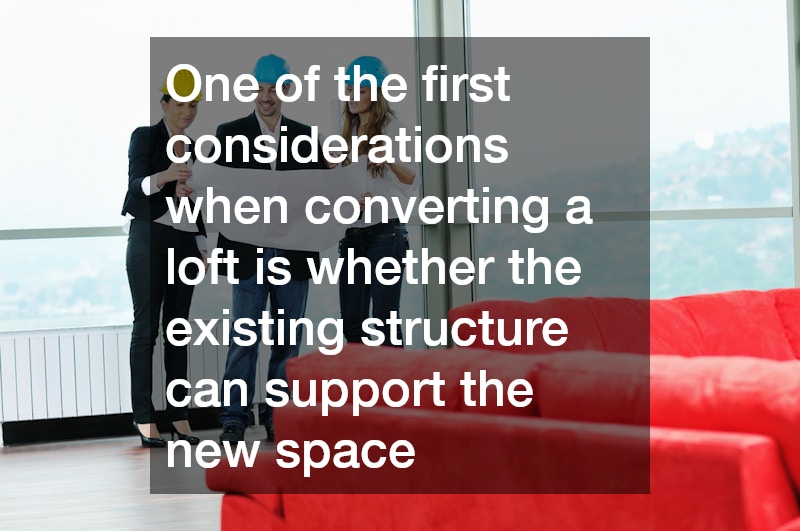
Converting your loft into a functional living space is one of the best ways to maximize your home’s potential. Whether you’re adding a new bedroom, home office, or a cozy reading nook, a loft conversion can breathe new life into your property. However, converting a loft isn’t just about adding some insulation and drywall — it requires careful planning and professional refurbishment to create a comfortable and safe space. Working with refurbishment service specialists ensures that your loft conversion meets all your needs while maintaining the highest standards of quality.
In this blog, we’ll explore some key refurbishments to consider when converting your loft to make sure the project adds value, functionality, and comfort to your home.
1. Structural Reinforcements
One of the first considerations when converting a loft is whether the existing structure can support the new space. Most lofts are designed for storage, not for living, meaning that the floor may not be able to carry the weight of furniture, people, and other items.
Working with refurbishment service specialists is crucial in determining whether the floor joists need reinforcement. These professionals will assess the strength of the existing floor and, if necessary, install stronger joists to make the space safe for everyday use. In some cases, other structural elements such as beams or supports may also need to be added to maintain the stability of the building.
This foundational refurbishment not only ensures that your loft can support a living space but also prepares it for the additional installations and furnishings that will follow.
2. Roofing and Insulation
Roof insulation is essential in any loft conversion, as it protects your new space from extreme temperatures. Without proper insulation, loft spaces can become unbearably hot in the summer and freezing in the winter. Loft insulation helps regulate temperature and improves energy efficiency, keeping your new room comfortable throughout the year.
When planning your conversion, consider insulating the roof’s interior with modern insulation materials. If your roof is old or has any leaks, you might also need to refurbish or repair it before completing the conversion. Replacing damaged tiles or adding a waterproof membrane ensures that your loft remains dry and protected from the elements.
This is another area where refurbishment service specialists play a vital role. They can inspect your roof and recommend the necessary upgrades or repairs to prevent future issues, such as leaks or dampness, from damaging your new living space.
3. Windows and Natural Light
Adding windows to your loft conversion is a crucial refurbishment that greatly enhances the space. Natural light not only brightens up the room but also makes it feel larger and more inviting. Dormer windows or skylights are popular choices in loft conversions because they maximize the amount of sunlight entering the space while offering beautiful views of the surrounding area.
Skylights are particularly effective in bringing light into the sloped ceilings of a loft. These windows can be installed at different points in the roof to provide even light distribution. Dormer windows, on the other hand, create more headroom by extending the roofline outward, making the space feel more open.
Consulting with refurbishment service specialists ensures that the windows are placed strategically for both light and ventilation, and that they comply with building regulations, such as fire safety standards.
4. Electrical and Plumbing Installations
Converting your loft into a livable space means integrating electrical and plumbing systems, which require professional installation. Whether you’re planning to add a bathroom, bedroom, or study, having sufficient electrical outlets, lighting, and plumbing is essential for modern living.
For a seamless conversion, electrical work should include wiring for overhead lighting, outlets for electronic devices, and any specific requirements for the space (such as lighting under cabinetry or bedside outlets). If you’re installing a bathroom, plumbing services will be required for water supply and drainage.
Hiring refurbishment service specialists ensures that all electrical and plumbing work is done safely and efficiently, meeting local building regulations. They’ll also be able to hide cables and pipes neatly within walls and ceilings, preserving the aesthetic appeal of your new loft space.
5. Stairs and Access
Access to your loft is another important consideration when converting the space. A well-designed staircase not only provides easy access but also contributes to the overall aesthetic of your home. However, fitting a staircase into your existing layout without taking up too much space can be challenging.
Depending on the available space, you may choose between a traditional staircase, a spiral staircase, or even a space-saving design. Each option has its advantages in terms of style and practicality, but it’s crucial to ensure that the stairs comply with building regulations. This includes appropriate width, headroom, and handrails for safety.
Consulting with refurbishment service specialists can help you design a staircase that fits seamlessly into your home while providing safe and convenient access to your loft.
.

